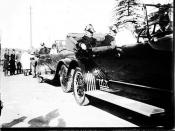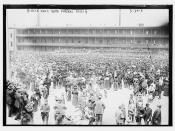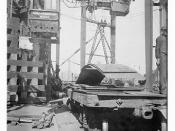Throughout the history of Naval Aviation, one can see a growing force. As new technology and innovations arose and advanced, Naval Aviation improved as well. In times of war and peace, through training and dedication, naval aviators improved their abilities and tactics to produce the fighting force it is today. If by chance, the "revolt of the admirals" had failed, the United States Military would not be what it is today and the Navy could not have the liberty of enjoying the Mahanian concept of commanding the sea. As new technology and innovations arose in the late 1800s and early 1900s, the military potentials for Naval Aviation were not so evident. Interest grew in 1898 during the inventions of the flying machine and the aircraft from Wilbur and Orville Wright, although naval officials did not recognize the military potentials the airplane possessed. However, in 1912, LT T.G. Ellyson, the first naval aviator, flew an aircraft successfully catapulted off a barge in the Potomac River.
This began the evolution of Naval Aviation and in the years to come, the face of naval warfare would change drastically. Official interest began in 1898 when the Navy assigned officers to sit in on an interservice board to investigate the military possibilities of Samuel P. Langley's flying machine. During the years ahead, naval observers attended air shows and the public demonstrations of the Wright Brothers. By 1909, naval officers were excited about the possibilities of the aircraft to be used as a scout and urged the purchase of the aircraft.
Progress in the years from 1898-1916 were marked by an endurance record of six hours in the air, the first successful catapult launch, exercises with the fleet at Guantanamo Bay, Cuba, and combat sorties consisting of scouting at Veracruz, Mexico. These activities of...



Superb!
I really liked this essay. It was extremely informative.
4 out of 5 people found this comment useful.